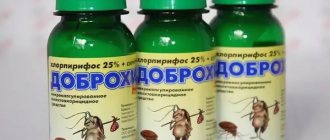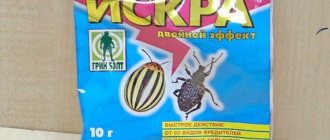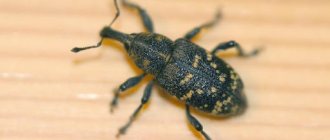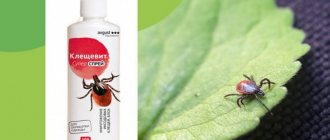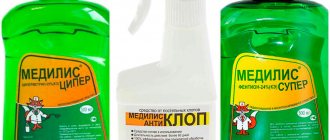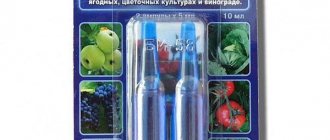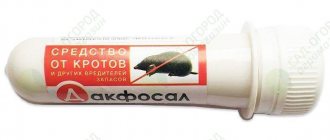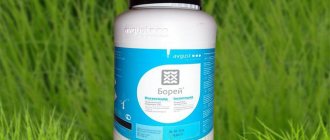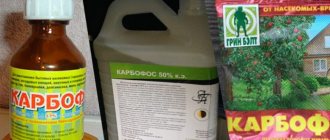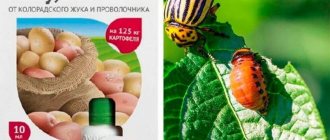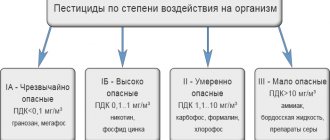There are plenty of harmful insects in nature. Some attack apartments and houses. But most of them damage plantings in the garden and vegetable garden. We will not list all types of insect pests.
Let’s focus on one of the most dangerous – bedbugs. Creatures can live in nature and at home. Quite resistant to poisons that are commercially available. Because of this, chemists have a hard time.
It is necessary to constantly create a lot of new substances. The drug Karbofos solves problems with “uninvited guests” that damage greens and healthy crops.
It differs in the greatest effectiveness from other pest control products. And especially bedbugs. The main task of the gardener remains to fully study the instructions for use, composition and other important points.
Description and characteristics of Karbofos
Karbofos is an insecticide. It is deservedly called the most productive substance that eliminates harmful “inhabitants” of the garden. Has a wide spectrum of action. Promotes the destruction of harmful insects that are found on the soil (open, closed ground).
There are few similar substances. They differ in cost, efficiency, and methods of use.
Organophosphorus substance. It contains several components, but the main one is malathion. If we consider only the main ingredient of a chemical product, then its appearance:
- colorless;
- liquid form;
- increased volatility;
- Strong smell.
The compound is oily. But it dissolves quite quickly. Since Karbofos is a volatile substance, it is worth remembering: the ability doubles if used in dry, hot weather. The higher the temperature, the faster the liquid working solution will evaporate.
With its help, the destruction of all known pests is quick and effective. Provided that Karbofos has thickened during long-term storage, the abilities do not change. It is also productive, toxicity persists.
You can buy insecticide in different forms, from different manufacturers:
| Appearance | Manufacturers |
| Powder | Alatar |
| Liquid emulsion in ampoules | Aktellik |
| Tablet form | Karbofos |
| Liquid | Iskra-M |
Differences in purchased substances: presence of additives, concentration of constituent components. Toxicity for humans is average (grade 3). It has a strong smell, but it quickly disappears and does not leave any pungent traces.
Bottom line
Karbofos is a widely known and frequently used insecticide for treating garden plants and residential premises against insect pests. It equally effectively eliminates blood-sucking and leaf-eating insects. If you do not abuse the use of this pesticide, then insects do not develop resistance to it: they do not get used to it.
The chemical formula is based on malathion, a potent poison of organic origin. Malathion is the main substance not only for the creation of karbofos, but also other insecticides and pesticides. You can choose a less toxic drug with a similar effect and no pungent odor.
Sources used
- Melnikov N. N. Pesticides. Chemistry, technology and application. - M.: Chemistry, 1987.
- Medved L.I. Handbook of pesticides (use hygiene and toxicology) / Team of authors, ed. Academician of the USSR Academy of Medical Sciences, Professor L.I. Medved
- <Gruzdev G.S. Chemical plant protection / Ed. G. S. Gruzdeva. — 3rd ed., revised. and additional.. - M: Agropromizdat
- Wikipedia article
Composition and principle of action
The composition of Karbofos has a special structure. It is both fatally toxic to cold-blooded creatures and weak against warm-blooded creatures. Classified as an FOS or organophosphorus compound. This makes it a class 3 hazard for people and pets, but a lethal poison for most types of pests.
The formula of FOS Karbofos consists of organic substances: sulfur and phosphorus. The active substance not only eliminates the harmful problem, but acts by influencing the nerve endings of the insect: it completely paralyzes it. Penetrates through the intestines.
Analogs
How can you replace karbofos in the garden? Common analogues of the drug are the following:
- Fufanon;
- Combat;
- Anti-mite;
- Alioth KE;
- Medilis-Malathion;
- Preventative;
- Carbocin;
- Intra-Vir;
- Alatar;
- Kinfos;
- other.
Combat
A modern insecticide whose action is aimed at eliminating bedbugs and other domestic insects. This product is safe for people and pets; it is used to treat premises in kindergartens, hospitals, and other institutions. Also used for disinfestation of residential buildings and apartments.
Fufanon Super
(Malathion based) is used to kill domestic parasites. Unlike Karbofos, it is less toxic. To eliminate garden insects, the drugs Fufanon Nova and Fufanon-KE are used. The drug belongs to the contact-intestinal poisons that act on insects after penetration. Fufanon can be combined with fungicides that are used to protect garden crops from diseases. It is not recommended to process the berries due to the unpleasant odor.
Anti-mite
The product is also low-toxic and contains toxic substances in moderate quantities. The drug is based on malathion and is intended to eliminate arachnids. But the chemical formula of the drug also works with other types of parasitic insects. The insecticide acts by contact-intestinal method: it penetrates the body of insects through the food tract and integument. Despite its low toxicity, you need to work with the drug in protective clothing and follow all safety precautions. The duration of the drug is 2 weeks. All this time, the parasites will die upon contact with the treated plants.
Alioth CE
A new generation insecticide, a complete analogue of Fufanon and Karbofos. Affects parasites during contact with plants and when eating leaves. It also partially has a fumigation effect: parasites die from the fumes of the poison. The product is harmful to both adult parasites and larvae of parasites. The solution is resistant to watering and rain, low temperatures: it does not lose its properties.
Prophylactic, MCE
A universal product that is used to protect plants from pests in early spring. The product is based on malathion with the addition of mineral vaseline oil. The drug is active against overwintering parasite eggs, which is especially important in the spring. The poison malathion penetrates the body of parasites through the contact-intestinal route; the oily substance envelops the body of the insect with a thin film and leads to suffocation. In larvae, the drug dissolves the protective shell, which leads to their death. Prophylactic is also used as a fungicide, as it blocks the germination of phytofungal spores. The Prophylactic formula is valid for 30 days.
Carbocin
A highly effective product for protecting garden crops from insects and their larvae. Release form: instant tablet containing urea (karbofos). Acts on insects by contact-intestinal route. The tablet contains malathion and cypermethrin.
Inta-Vir
It is an analogue of Karbofos in its mode of action on insects: it is a nerve poison that leads to death due to blocking nerve impulses between the cells of the body. The parasites stop feeding within 30 minutes after exposure and die within 24 hours. The developers claim that the drug has a detrimental effect on 52 types of insects. The advantage of Inta-Vir over karbofos is the absence of a pungent odor. Therefore, the drug is used to treat berry bushes that are susceptible to foreign odors. Flaws:
- does not affect insect eggs;
- ineffective against insects with dense shells;
- capable of destroying beneficial soil microfauna when released onto the ground.
Also, the drug is quickly washed off by rain and watering; the waiting period for action sometimes reaches three days. Despite these disadvantages, Inta-Vir is widely used in homestead farms.
Alatar
Contains malathion and cypermethrin. The release form is a concentrated emulsion, the method of exposure is contact-intestinal. The drug destroys and repels insects, reliably protecting crops from their aggression. The resistance and short duration of action of malathion are successfully compensated by cypermethrin, which persists on surfaces for up to thirty days. This substance is not destroyed by ultraviolet radiation and high temperatures. When processing plants, it is recommended to wet the leaf plates from the back side as well.
Kinfos
Analogue of Karbofos without malathion content. The drug has a nerve-paralytic effect on insects, penetrating into the digestive tract and through the integument. The product contains dimethoate and beta-cypermethrin. It has a double effect on parasites: on the food tract and on nerve impulses. Thanks to this, Kinfos leaves no chance for insects to survive.
Less toxic drugs
Karbofos is a moderately toxic substance, but new generation drugs have a low percentage of toxic substances. This:
- Diazinon;
- Imidacloprid;
- Permethrin.
Diazinon is used for disinfestation of premises, treatment of hair of domestic and farm animals. Does not accumulate in the cells of warm-blooded organisms. It acts on parasites in a contact-intestinal manner. Partially has a systemic effect, that is, it penetrates into the structure of plants. However, it is not phytotoxic.
Imidacloprid is a synthetic analogue of nicotine, but is characterized by less toxicity. The drug is used to combat insects in gardens, greenhouses, indoors and for treating pet hair.
Permethrin is a synthetic pesticide. Field of application: extermination of parasitic insects: lice, nits, fleas, garden pests. It has a nerve-paralytic effect, blocks nerve impulses between the cells of the body.
Features of use in the garden
Karbofos for the garden is an irreplaceable substance. Its effect covers 90% of harmful insects that can be found on crops and in the soil. The drug is needed not only in gardening; its use in medical institutions, agriculture, and forestry has become an active assistant.
At its core, Karbofos is a disinfectant. In addition to disinfection, the positive aspects include:
- crop preservation;
- increase in fruits;
- elimination of not only adult individuals, but also their larvae.
In this case, the soil is not damaged. Requires compliance with standards and dosages. Follow strictly the recommendations specified in the instructions. Preparation for each culture is prescribed and has its own nuances and characteristics.
Karbofos is recommended to combat:
- codling moths and gallicia;
- all types of bedbugs and sawflies;
- aphids and honeysuckers;
- weevils and whiteflies, mites.
Important! The product poses a threat to the above insects. But besides them, Karbofos also kills useful “visitors” of the dacha and vegetable garden. Its detrimental effect affects pollination, as pollinating insects are eliminated. Hence the rule of use: it is prohibited to carry out any activities with the working substance during the flowering period.
Temperature
Bouvardia does not have any special requirements for heat. She feels comfortable at average room temperature. During the growing season, which begins in spring and continues until autumn, the plant needs +200 - +250. Sudden changes, which may occur in the spring, when the current year’s stems grow, should not be allowed. Flower buds form on them. In order for the process of bud formation to complete normally, during spring return frosts, when the house gets cold, you need to turn on the heater to maintain +200.
If the summer is too hot, above +280, it is necessary to reduce the temperature using an air conditioner.
Summer-flowering species and varieties are transferred in the fall to a cool room with +100 - +120. This is due to the characteristics of Bouvardia, which in its homeland is classified as an evergreen perennial. In our geographical conditions, during the cold season it enters a dormant state. All vital processes slow down, therefore the temperature decreases.
The best place for hibernation is a winter garden or an insulated balcony.
Those species that bloom in the cold season behave differently. They do not have a pronounced rest period. For winter flowering, in addition to additional lighting, they need a “summer” temperature, not lower than +220. It must be maintained before flowering begins and throughout it.
Rules for preparing the solution
The Karbofos insecticide should be used strictly according to the recommendations and instructions compiled by specialists. The working solution will need to be diluted according to the problem, since the liquid affects different insects differently. There is no standard dosage for mixing.
The working solution is prepared according to a strict procedure: Karbofos is mixed with a small amount of water. The required volume of liquid is gradually added. In this case, stirring should be without interruption. The working mixture is used only after obtaining a homogeneous suspension.
The dosage is calculated using different formulas:
| Plant | Treatment | Dosage | Pests |
| Quince, apple and pear | Sapling, young tree – up to 2 liters, fruiting tree – 7-10 liters | Bucket (6-7 l)+60 g Karbofos | Leaf roller and scale insect, weevils and cherry flies |
| Sweet cherry, plum, cherry tree | 1.5-2 l per planting | 8 l + 55-60 g of substance | 1.5-2 l per unit Sawfly, scale insects, gall midges, leaf rollers, bud moth |
| Apricots, peaches | Adult plant – 10 l, young plant – 2 l | 10l package of substance | Leaf roller, codling moth |
| Shrubs (gooseberries, currants, raspberries) | 1-1.5 liters per bush. Raspberries - per hundred | 1 package+8 l | Weevils, gall midges, bud moths, scale insects |
| Grape | Use 1-1.5 liters per hundred square meters | For 8 l add a package of product | Spider mites, phylloxera, mealybug |
| Peppers, tomatoes, cucumbers | It is used by spraying. 10 sq. m.=1 l of working mixture | 10 l+60 g product | Aphids and whiteflies, spider mites and germ flies |
How to process
Treatment options, options and the need for application are an important point for preserving the crop and eliminating harmful “visitors”. To obtain complete information about this, study the instructions for use.
The standard procedure for treatment is spraying. The working fluid is applied using a respirator. The work can be considered complete after completely wetting the green part of the plant (stem, foliage). The rules for working depend on the type of crop.
Berry bushes
Shrubs are fully protected when spring gardening is carried out. It must be done before flowering. The second protection measure should be carried out after full flowering and fruit harvest.
If treatment with Karbofos against currant bugs is carried out, then spraying is allowed up to 3 times, instead of the standard two:
- appearance and development of kidneys;
- period of inflorescence formation;
- several days before the start of harvesting work.
Strawberries and garden strawberries are subject to attacks by bugs. As well as mites and strawberry weevils. To prevent this phenomenon, spraying is carried out in the spring (after the snow melts) during the budding period. Then they are treated with Karbofos in September (first week).
Raspberries and blackberries are also sprayed twice: in the spring after the snow melts and the buds appear, after harvesting the fruits.
Fruit trees
It is always recommended to treat fruit and berry trees with Karbofos. The working solution is applied in the spring to the surface of the plantings. Spraying of trees takes into account the age of the crop. In general, one tree takes up to 8-10 liters. for young animals – 2-5 liters.
If you have citrus trees in your country house or greenhouse, one unit will require 3-5 liters. To spray a sea buckthorn tree, the working fluid is made more concentrated: 3 liters of water + 50-60 g of Karbofos. Spraying calculation by quadrature: 10 sq. m = 2 l of working suspension.
Flowers
Karbofos against bedbugs is used in gardening no less often than for vegetable crops. The substance provides protective properties against pests:
- spider mite and sawfly;
- aphids and bedbugs.
With Karbofos, garden crops and flowers feel great. But exact dosages will be required: take 50-60 g of Karbofos and dilute it in a small amount of water. Dilute to obtain 8 liters of working suspension.
Spraying is carried out in the standard way: until the green part of the flower is completely wetted. Application of the product is provided no more than 2 times a season: in the spring before flowering and after. Watering should be calculated based on quadrature: 2 liters of working mixture per 10 square meters. The following can be processed:
- rose bushes;
- barberry;
- jasmine.
As practice shows, after applying the solution to other garden plants, Karbofos does not cause harm. But it’s worth doing a compatibility test first.
Reviews
Antonina, 56 years old, Kazan The house was tormented by bedbugs. No matter what I tried, I couldn’t get them out. Every morning after waking up, I discovered small red spots on my body that itched terribly and caused a lot of cosmetic discomfort. I was advised to use karbofos. Despite its poisonous properties for others, I made up my mind. I prepared the solution, put on glasses, a headscarf, a respirator, rubber gloves and a tracksuit. I sprayed the whole apartment with the solution. She closed the windows and went to her friend's for the night. The next morning I came, ventilated it, by the way, the smell quickly disappeared, I washed everything and began to wait for the result. A year has already passed. I forgot about bedbugs, it seems, forever.
Irina, 45 years old, Moscow region
I recently planted young apple trees at my dacha. I admired them, my eyes were happy. But aphids attacked my apple trees. The leaves began to curl, and black merciless insects began to multiply at tremendous speed. Having rummaged through the depths of the Internet, I learned about a unique drug - karbofos, which was able to solve my problems in 4 hours. Having prepared the solution according to the instructions, I treated the affected apple trees, spraying not only the diseased leaves, but also the healthy ones. The aphid died right before our eyes. I saved my trees.
Anton, 67 years old, Belgorod region
I treated sea buckthorn against gall mites with karbofos. The immediate result was obvious. I prepared a solution based on a 60 gram package, which was diluted in 3 liters of water. Before planting, I dipped the cuttings into the solution. My sea buckthorn, although still small, has already bloomed, delighting its owner.
Concomitant use with other drugs
In the garden and vegetable garden you have to use various substances. The use of fungicides and growth stimulants is a necessary measure to obtain high yields. Therefore, it is worth studying how well the products are compatible.
You can find out such information from the instructions for use or conduct a short compatibility test. If Karbofos cannot be combined for some reason with fertilizers or fertilizing, you can consider and use analogues of the product.
Of the drugs that really go well with Karbofos, it is recommended to use Aliot, Alatar or Fufanon. And Novaktion ensures an increase in the effect of the protective substance.
The Permethrin + Karbofos procedures show good results. This combination maintains plant resistance to pests while providing 100% protection.
But there is a categorical taboo on the use of Karbofos with Fazaln. The substances are similar to each other and can destroy green spaces and damage the fruiting process.
If you need to replace Karbofos, use the list of similar drugs:
- Diazinon;
- Imidacloprid;
- Permethrin.
Content
- Purpose
- Composition and preparative formula
- Operating principle of "Karbofos"
- Regulations for the use of "Karbofos"
- Security and restrictions
- Analogues of the drug
- Advantages and disadvantages of application
- Flaws
- Advantages of use
"Karbofos" is a multi-purpose organophosphorus pesticide. The material includes the purpose, composition, formulation, principle of action, safety issues, analogues, etc.
Precautionary measures
The main question that Karbofos users ask: is it harmful to humans, is intoxication possible for pets? Since the substance belongs to hazard class 3, precautions should be observed in any case.
Low toxicity for warm-blooded animals does not mean that the drug is completely harmless. When diluting or working with the solution, you should wear a protective suit and provide protection for mucous membranes. It is prohibited to consume food or drink during dilution or treatment with Karbofos.
After all procedures, hands are washed under running water and laundry soap. If the solution gets on open areas of the body, then you cannot wash it off with hot water. Is it dangerous. Also, the solution and treatment are carried out with cold liquid.
Important! Applying the solution to plants is prohibited in the presence of reservoirs and containers with drinking water at a distance of 1-2 km.
Security measures
When storing the drug, when preparing a solution for spraying damaged trees and plants, and during insecticidal treatment, certain rules for safe handling of the drug should be followed:
- You cannot eat or drink liquids.
- After completing the work, you need to change clothes, which, together with the personal protective equipment used, should be subjected to special treatment in the form of washing.
- Upon completion of work, you must wash your face, remembering to clear the contents of the internal nasal cavity, and wash your hands thoroughly. All procedures should be carried out using soap.
- It is prohibited to treat with the drug near bodies of water.
- Vegetation should not be sprayed during periods of flowering. This is due to the fact that flowers attract bees, for which karbofos is a poison.
- The drug is subject to decomposition when heated, therefore, when performing all procedures, including preparing the solution and storing the original product, increasing the temperature should be avoided.
- The drug should be stored in a dry room away from fire. Storing karbofos with food or medicine can lead to poisoning.
- Animals and children should not have access to karbofos.
- Do not use when mixed with other analogue drugs.
Expiration date and storage rules
The structure of Karbofos is liquid. They buy the suspension already in bottles that close well. In this case, storage of the insecticide provides additional points:
- Keep the drug away from heating devices and heat.
- Store in a separate room designated for storing garden tools. Do not keep food, dosage forms or crops near the substance.
- Keep children and animals away from the insecticide.
